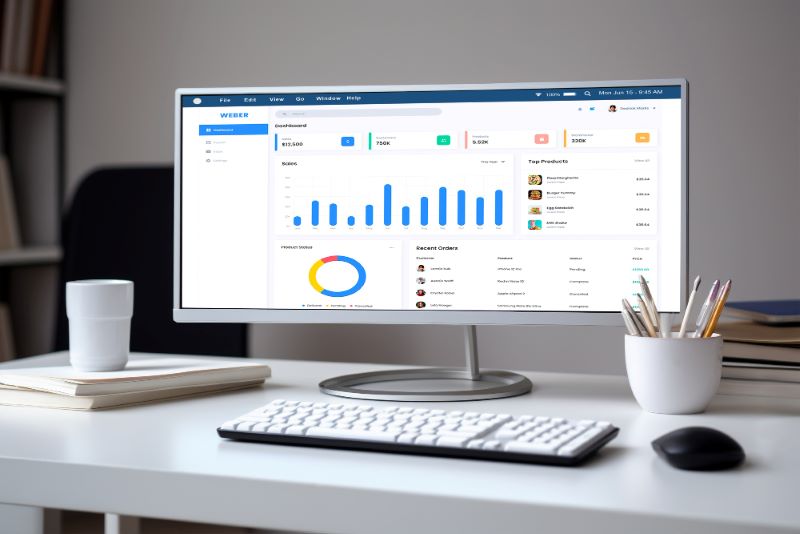4 Ways To Enhance Price Analysis With Web Scraping

While there are many aspects of a product that are important to a consumer, price is one of the most important. Personally, a product has to be pretty great for it to justify a larger-than-expected price tag. Shopping online presents an abundance of choices out there and can sometimes feel like a chaotic, global game of The Price Is Right. I know I sometimes default to the lowest priced product, even if I know the price sometimes reflects the quality of the product. Especially as a recent graduate, it’s tempting to cut costs whenever possible. Thankfully, for business owners and consumers alike, performing price analysis is a great way to determine the perfect price point for your product or the ideal amount you’re willing to pay for a good or service. Incorporating web scraping into your pricing routine can give you a better sense of how malleable the price is, the actual product demand, and consumer sentiment.
If you already know the basics of price analysis, then use the table of contents below to jump ahead and learn how to incorporate web scraping into your business practices.
Table of Contents
3. 4 Things You Learn From Pricing Analysis
4. 3 Ways To Add Web Scraping To Pricing Analysis Techniques
What Is Price Analysis?

Price analysis is the evaluation of price data for a product/service. Cost analysis incorporates cost and profit into the analysis. When you perform price analysis, you discover the unit price that the market can handle. By theorizing how the market would respond to different price points, you easily find an ideal price that helps maximize profit without placing too high a cost burden on consumers. Therefore, it is essential that a business understands the possible price range for their products or services in order to grow and continue to make a profit. For consumers or young people like me trying to create a better personal budget, being aware of all the different choices in the market can help you save money in the most unlikely of places.
How To Do A Price Analysis

To perform analysis on price, a successful business must develop consistent and varied pricing analysis techniques. This involves analyzing competitor prices, discerning how flexible the market is, and anticipating the response of consumers to different prices. In addition to price analysis, performing cost analysis by factoring in the cost to the vendor to produce a product, then you can find places to reduce costs along the way to reach that ideal price point while maximizing profit.
4 Things You Learn From Pricing Analysis

Obviously, the goal of analysis is to find the perfect price point. But there are other lessons to be learned from competitive pricing analysis that can help grow your business and sense of the market. Below are just a few of those lessons.
1. Analyze competitor prices
Pricing analysis also involves collecting and analyzing data on the prices of your competitor’s products and services. This helps you determine an average range based on the existing market. On the consumer end, this helps you discover all your different price options, helping you make the best decision for yourself. For sellers, this initial look at competitor prices helps you establish a possible range of prices by finding the lowest competitor price and the highest price.
2. Find ideal consumer price
For consumers, there is always going to be the maximum the average person is willing to pay for a given product. Price analysis helps you discover this ideal consumer price. You want to find the highest price a consumer is willing to pay so that you’re aware of the upper limit and can cut costs accordingly to maximize profit at that price point. While much of competitive pricing analysis focuses solely on seller competition, the price you choose must ultimately be reasonable for the consumer.
3. Gauge demand
In addition to ideal consumer price, there is also fluctuating demand in any given market. If consumers are willing to pay more than average, then you can see if there is a corresponding rise in demand across a market. If the demand is increasing, then your price point can be higher than normal. For example, think of the desperate lengths parents are willing to go to get the popular holiday gift of the year for their child despite increasing costs due to demand.
4. Understand market trends
As culture changes, so do consumer priorities. For example, younger generations tend to be more conscious of how a product impacts the environment or what materials it is made of. With more people working from home, purchases on desks, home official supplies, and video conference technology are increasing. Being aware of external forces impacting the market, whether situational or generational, helps businesses anticipate generational shifts or sporadic ones.
3 Ways To Add Web Scraping To Pricing Analysis Techniques

Web scraping is the process of automatically extracting information from a web page and organizing it into a shareable format. To read more about the technical aspects of price scraping, read our previous blog post on how price scrapers help sellers. Below are three more ways that adding web scraping to your price analysis process can make it more dynamic and data-driven.
1. Create a custom scraping solution
While basic scraping modules are useful, they’re a bit limited in scope. If you have multiple products or services that your business provides, then you need a specific scraping solution built for your size and scope of products. When you create a custom scraping solution with Scraping Robot, you can scrape by millions, even billions, and pay less per scrape. Additionally, the Scraping Robot team helps manage and develop proxies, leaving you more time to run your business and focus on your mission. If this sounds like an ideal fit, contact us to get started.
2. Scrape customer reviews
As initially mentioned, price analysis evaluates per unit price. However, most business owners and online sellers can agree that customer sentiment is essential to understanding the ideal price point for a product. Without knowing when and how consumers buy a product, you won’t know the upper range for a given product/service. Factors to consider are whether a product is seasonal, a one-time or recurring purchase, if it is essential or simply a desire to be bought once needs are met. Thankfully, the internet is full of customer sentiment data in the form of online reviews. By scraping these reviews, even those of competitors, you can get a sense of how malleable the market is for consumers and how much more they would be willing to pay at any given price. To learn more, read our previous blog about developing a competitive pricing strategy.
3. Discover product details
When you focus exclusively on price, it is easy to forget the slight variations in the different options in a market. For example, if you are determining the perfect price for your blender, then you need to consider any special or new features of the blender compared to the competition. Understanding product details for a competitor product with a higher price point can demystify the reasoning behind the higher price point. With online shopping, it is easier than ever to scrape product details available in the information section of a product page. Collecting all these details in one place makes it easier to spot the subtle differences that stand out to consumers.
4. Cut costs along the way
Cost analysis is when you factor in the cost to the vendor in the pricing process as well as the cost to the consumer. While this is not inherent to pricing analysis, analyzing the costs of production with web scraping helps you maximize your profit at any given price. Through analyzing the costs of each step in the process, you can cut unnecessary costs. This increases your net profit, regardless of the final price point you chose since your base production costs are lower. This might include choosing cheaper materials, changing the production process, changing the shipping costs or process, and changing the packaging of the product itself.
Conclusion

While the entire world can feel fixated on price, it is important to remember that many attributes of a product or service attract customers. By engaging in price analysis, a company or individual seller can learn how much price fluctuation the market can handle and how to maximize profit without alienating loyal customers. When you add web scraping techniques to your process, then you learn even more about customer sentiment, market demand, and how to reduce production costs.
The information contained within this article, including information posted by official staff, guest-submitted material, message board postings, or other third-party material is presented solely for the purposes of education and furtherance of the knowledge of the reader. All trademarks used in this publication are hereby acknowledged as the property of their respective owners.
